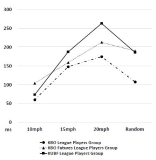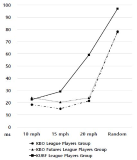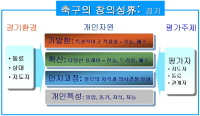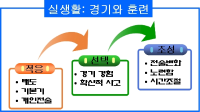PURPOSE This study aimed to develop a model for life skills transfer in sport. METHODS A literature review of research on life skills transfer was conducted. The prior representative studies on sport life skills and transfer models were selected and discussed to improve the validity of this study. RESULTS First, based on the basic psychological needs of the internalization and generalization of life skills, the model for life skills transfer should consider the influence of the explicit and implicit climate and environment. Furthermore, access to cognitive processes is required based on the conceptualization and integration of transfer. Second, the concept of a transfer was defined, and key issues of the cognitive processes that support the connection between the sport domain and out of the sport domain were discussed. Third, the model for life skills transfer in sport was presented. In this model, life skills transfer occur through sport context, cognitive process, promoting factors, and out of sport context. CONCLUSIONS Since the 2000s, research on life skills and transfer in sport has developed quantitatively based on positive youth development theory. Unfortunately, research on this area in South Korea is very insufficient. This study suggests a model for life skills transfer in sport based on an extensive and systematic analysis of the prior research, and this model can be used for future research.
PURPOSE This study was to examine safety awareness of sports among university students. METHODS Total 1950 university students of 9 regions responded to questionnaires on safety awareness of sports with using simple random sampling. The date were analyzed by frequency analysis and Two-way ANOVA. RESULTS The results of this study werew as follows: Fistly, male students were experienced safety awareness education more than female students. In addition, the education of safety awareness of sports took place in sports field, but most of students did not aware of safety personnel. Secondly, university students thought that sports was not safe because sports facilities and equipments were not managed and they were worn out. Thirdly, they perceived sports safety was managed generally normal. Furthermore, they perceived the aging of facilities and equipments at sports sites was major factor in the occurrence of safety accidents. In order to reduce sports safety accidents, it is necessary to facilitate safety education of sports at government. CONCLUSIONS The results of this study will be used as fundamental information to raise safety awareness in university students and to establish safe sports culture.
PURPOSE The purpose of this study is to examine the goalkeeper’s area of defense and how the range varies depending on the relative position of the goal, goalkeeper, and ball in a 9-meter jump shot during handball matches. METHODS Data was collected from seven qualifying divisions in mens handball from the 99th National Sports Festival in Korea. A total of 231, 9-meter jump shots were analyzed with the goalkeeper‘s area of defense measured from the point the ball left the shooter’s hand and calculated based on the relative position of the goal, goalkeeper, and ball. Video analysis was conducted using the Kwon3D 3.01 program and three-dimensional coordinates calculated using the DLT method. RESULTS First, dimension of handball goals measure 3m wide and 2m high, however, results show that goalkeeper’s actual area of defense was narrower than the width of the goal posts, while vertically, area exceeded the height of the cross bar. Second, if the goalkeeper defended the striker’s shot from the side rather than from the front, the goalkeeper’s defense range was higher for the opposite side of the goal post than the near side of the goal post. CONCLUSIONS Key factors influencing goalkeeper’s area of defense include height of shot and position of goalkeeper. Results also indicate that vertical movements are more important than horizontal movements for goalkeepers in handball thus such implementation in training may lead to performance enhancement.

Purpose The purpose of this study was to conduct a typological classification of female college students in sport studies regarding perceived career barriers. Methods Q-methodology was used to identify female college students’ viewpoints on carrier barriers. The Q sample was distilled from 76 statements (64 from literature reviews and 12 in-depth interviews) to 25 statement after conducting literature review, in-depth interviews and surveys with open-ended questions. The P sample for this study was 30 students around Seoul and PQmethod software was used for data analysis. Results Three distinct views were extracted: First type of ‘career opaque’, revealed that students have failed to find their own aptitude and interest. Second type of ‘sexual discrimination-male centered’, implied students’ concerns about discriminating factors in relation to marriage and pregnancy for the job they desire. Third type of ‘Insufficient experience and qualification’, indicates students perceive their lack of experience or qualification required for their career. Conclusions The identification of these three viewpoints could provide insights that can be used to design more segmented and detailed career policies for female college students in sport studies.


[Purpose] The purpose of this study was to investigate effects of baseball expertise and stimulus speeds on coincidence-anticipation timing accuracy of batting. [Methods] Participants were 21 baseball batters, 7 of Korea Baseball Organization(KBO) League, 7 of Korea Baseball Organization Futures League, and 7 of Korea University Baseball Federation(KUBF) League. All of the participants were asked to swing the bat exactly at the time when the light arrived the target point of the runway. The Bassin Anticipation Timer was used to present stimulus with stimulus speed of 10, 15, and 20mph. Participants performed 10, 15, 20mph trials (3 kinds of speed per 5 times) and random trials (3 kinds of speed per 3 times randomly). The timing error of coincidence anticipation task was recorded and raw scores were transformed to constant error(CE), absolute error(AE) and variable error(VE). For data analysis, two-way ANOVA with repeated measures were used. And post-hoc test (Tukey HDS) were conducted. [Results] Results indicated a significant interaction on expertise and stimulus speeds for CE, AE and VE. The KBO League players group showed more accurate and consistent performance than the KBO Futures League players group and the KUBF League players group in baseball batting timing. [Conclusion] This findings revealed that coincidence-anticipation timing accuracy batting in baseball can be used as a factor to distinguish the ability of the other.




Purpose: This study was to verify the relationship between coaching behavior(autonomy/controlling behavior), self-regulation motivation and performance. Method: 356 athletes (from middle to work and professional team) in individual and team sport completed coaching behavior scale developed by this researchers assessing autonomy and controlling coaching behavior perceived by players, Korea Basic Pyshoclogical Needs Scale (KBPNS) assessing basic psychological needs, Behavioral Regulation in Sport Questionnaire (BRSQ) assessing sports motivation level based on self-determination theory, and sport performance score. To estimate the relationship between coaching behavior, self-regulation motivation and performance, this study employed the structure equation modeling analysis. Results: The relationship between psychological needs, regulation motivation and performance showed that autonomy coaching behavior tend to reinforce competence and autonomy of player. These variables have a positive effect on more inner regulation motivation. Moreover, the intrinsic motivation through stimulation experience was a key factor leading to a positive performance by improving the performance strategy and skill of athletes. Conclusion: These results are meaningful as an empirical evidence that relationship between motivation and performance can be changed according to the type of coaching behavior, and that autonomous coaching behavior play an important role in maximizing the performance of player that provided theoretically form.

Recent studies focus on Metabolic Equivalent Task (MET) to measure levels of and areas of peoples’ physically active lifestyle because MET more readily translate peoples ’subjectively perceived physicality into standardized scores. MET also allows researchers to clearly understand the relationships between peoples’ physicality and psychological variables. Thus, the purpose of this study was to understand the levels of and areas of MET among Korean middle school students and to analyze the relationships between MET scores and physical self-efficacy. A total of 278 questionnaires were analyzed using SPSS 18.0. Exploratory factor analysis, descriptive analyses, and regression analyses indicated that middle school students’ physically active lifestyle occurred in the order school, leisure, housework, and transportation areas. Female students did more physical activity in the areas of housework and transportation, compared to male students. In contrary, male students did the majority of physical activity in the areas of school and leisure. Physical self-efficacy affected students’ MET scores, especially for vigorous intensity activity. With regard to gender differences, physical self-efficacy affected male students’ MET scores in the area of leisure while female students’ MET scores were affected in the areas of school and housework. The results were discussed in light of methodological and pedagogical perspectives, and future research suggestions were provided in the discussion.

The purpose of this study was to explore a framework of understanding football performance. Researcher review was conducted to organize perspectives for football performance and drew implications as well as drift of football performance based on intelligence approach. Discussions for intelligence had been proceeded in concepts of learning ability, multiple intelligence, successful intelligence, and moral intelligence. Discussions of football performance approaches fitness, skill, and strategies in traditional intelligence aspects. The multiple intelligence perception discusses perspective, mentality, body, and analysis. The successful intelligence perspective deals with creativity, practical intelligence, and football talents. However, specific discussions for moral intelligence have not been progressed yet. FIFA’s social responsibility project and UEFA’s RESPECT campaign reflect that the discussions of football performance develops in a way of the moral intelligence. In European football, issues regarding value, such as RESPECT and against Racism, are currently emerging. Considering the change in the European football, the global football leagues will share the issues related to value in the near future. Given the fact that discussion for intelligence had been proceeded learning ability, multiple intelligence, successful intelligence, and moral intelligence, the moral intelligence will be a main concern in the further football performance discussion. The moral intelligence will be incorporated into football performance evaluations soon. Furthermore, teams and players will strive to place efforts in order for pursuing value and reputation as factors of performance.






The purpose of the study was to determine relationship of abdominal fat, adipocytokine, bone mineral density, and bone turnover markers in obese male adolescents. Twenty four male adolescents (obese: 12, normal: 12) volunteered to participate in the study. Anthropometry and skeletal maturity were measured. Body composition and bone mineral density were estimated by DXA (Hologic, QDR-4500, USA). Abdominal fat with total adipose tissue (TAT), visceral adipose tissue (VAT), subcutaneous adipose tissue (SAT), and visceral adipose tissue to subcutaneous adipose tissue ratio (VSR) were estimated by computed tomography (ECLOS, HITACH, Japan). Blood samples were obtained for and analysis of adipocytokines including leptin and adiponectin. Bone turnover markers, osteocalcin (OC), bone-specific alkaline phosphatase (BALP) for bone formation markers and N-terminal telopeptide (NTx), C-terminal telopeptide (CTx) for bone resorption markers were analysed. All data were analyzed utilizing SAS 9.3 (SAS Institute, NC, USA). Independent t-test was used to evaluate the differences between obese adolescents and normal adolescents. Pearson correlation analysis was applied to figure out the relationship between abdominal fat, adipocytokines, bone mineral density, and bone turnover markers. Multiple regression analysis was used to find out the factors of abdominal fat which influence on bone mineral density. A level of significance was set at p<.05. The results of the study indicated that fat tissue (p<.001), percent body fat (p<0.001), TAT (p<.001), VAT (p<.001), and SAT (p<0.001) were significantly higher in obese adolescents than normal adolescents. However bone mineral contents were significantly higher in normal adolescents. Normal adolescents have significantly higher whole body BMD and lumber BMD than obese adolescents. Abdominal fat including VAT and SAT related negatively with whole body BMD and lumbar BMD. Leptin related negatively with BMD whereas adiponectin related positively with BMD. NTx for bone resorption marker related positively with abdominal fat. Visceral adipose tissue was a predictor for whole body BMD and lumbar BMD in explaining 46% and 32% in adolescents. In conclusion, obese male adolescents have lower whole body BMD and lumbar BMD than normal adolescents. Abdominal fat including VAT and SAT related negatively with whole body BMD and Lumbar BMD. And leptin and adiponectin were closely related with BMD. Finally, visceral adipose tissue was a predictor for whole body and lumbar BMD in adolescents.
PURPOSE This study aimed to apply a team-building program for preparing the national archery team for competition in the Olympics. METHODS To achieve the purpose of this study, six national archers (three men and three women) were included. The team-building program was applied for a total 6 sessions (one session per week). Group cohesion and efficacy were measured three times before, after, and at a later application of the program. The collected data were analyzed with the Friedman and Wilcoxon signed-rank tests, which are nonparametric statistical techniques for data analysis. In addition, an in-depth interview for qualitative data was conducted for each archer to explore the effects and changes resulting from participation in the program. RESULTS The results of the study are as follows: first, the levels of team cohesion and efficacy in the national archery team increased after the implementation of the program compared to those in the pre-implementation state. Furthermore, high levels of team cohesion and efficacy were maintained at the follow-up measurement. Second, the archers recognized that closeness and faith in one another increased more between team members. Furthermore, there were positive changes in team communication, atmosphere, cohesion, and efficacy during team matches. CONCLUSIONS The team-building program applied in this study was found to have a positive effect on various factors related to team cohesion, such as team communication and team atmosphere. Therefore, future studies should consider developing a team-building program that can contribute to improving team sport performance for different sports and the effects of the program should be examined using various methods.